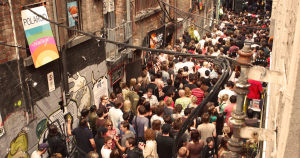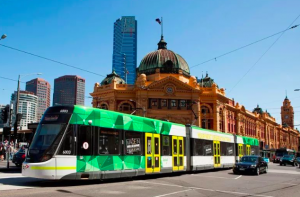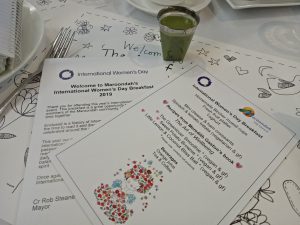Sun-drenched pedestrians gripping
cameras and shopping bags flood the intersection and cross towards Flinders
Street Station, St Paul’s Cathedral or Federation Square. Church bells dangling
above the city drone with an overbearing toll and bustling foot traffic
accelerates along Swanston Street, eager to greet friends or explore the city’s
many alcoves. To the initiated, it’s in some of these mysterious alcoves where Melbourne’s
sub-culture breathes. Beyond the busy main streets and cosmopolitan shoppers, Melbourne
laneway street art broods in the shadows of corporate buildings.
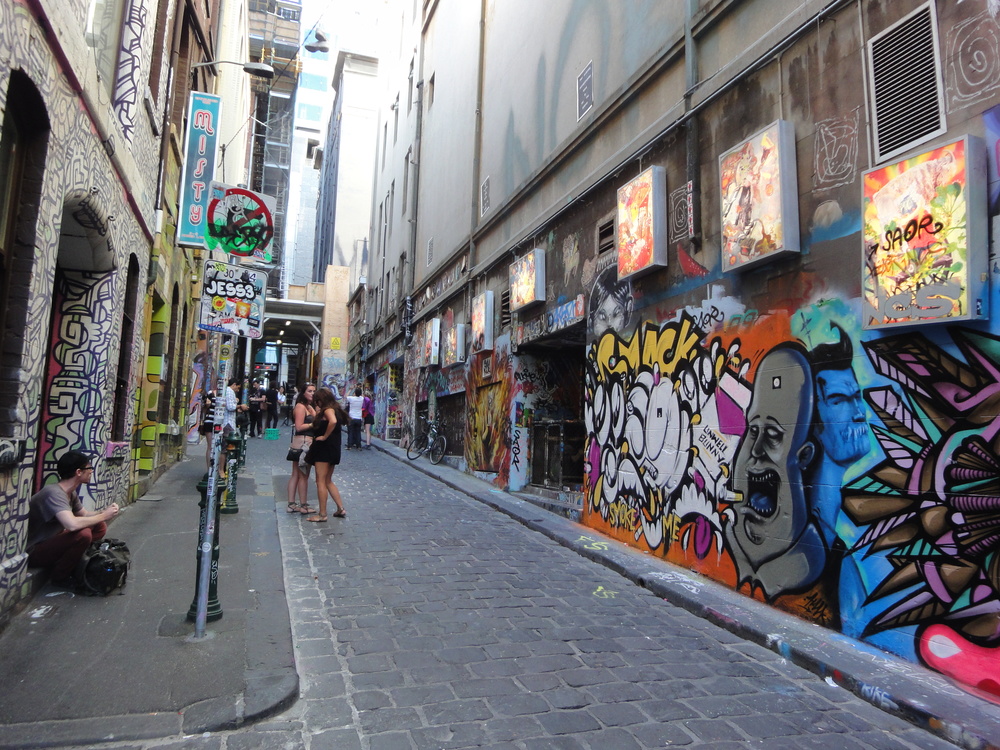
Hosier Lane, a brief walk along
Flinders Street towards Spring Street, is where many will find the catalyst for
street artists and Melbourne’s ascension within the ranks of international
street art. Hosier Lane is ear-marked by a partially legible street sign plastered
with stickers. The shadowy face of Heath Ledger’s ‘The Joker’ sprayed across a
double doorway greets visitors. His red lipstick bleeds as his gaze lingers to
his right, pointing them in the direction of walls awash with pasties (cut-out
artwork pasted onto walls) and spray-painted murals and stencil-work.

This bluestone-cobbled
laneway, along with the rest of Melbourne’s central business district, was created by land speculators who subdivided surveyor Robert Hoddle’s efforts from the early 1830s. The new design, an arbitrary grid of
cobbled roads and lanes, allowed horses and carts to pass. After the demise of
Victoria’s Gold Rush days, Melbourne’s laneways descended into havens for crime
and indiscretions. Nowadays, some of Melbourne’s skinny alleyways make for open-air
galleries where artists, both local and from abroad, flock to lay the
groundwork for their art.
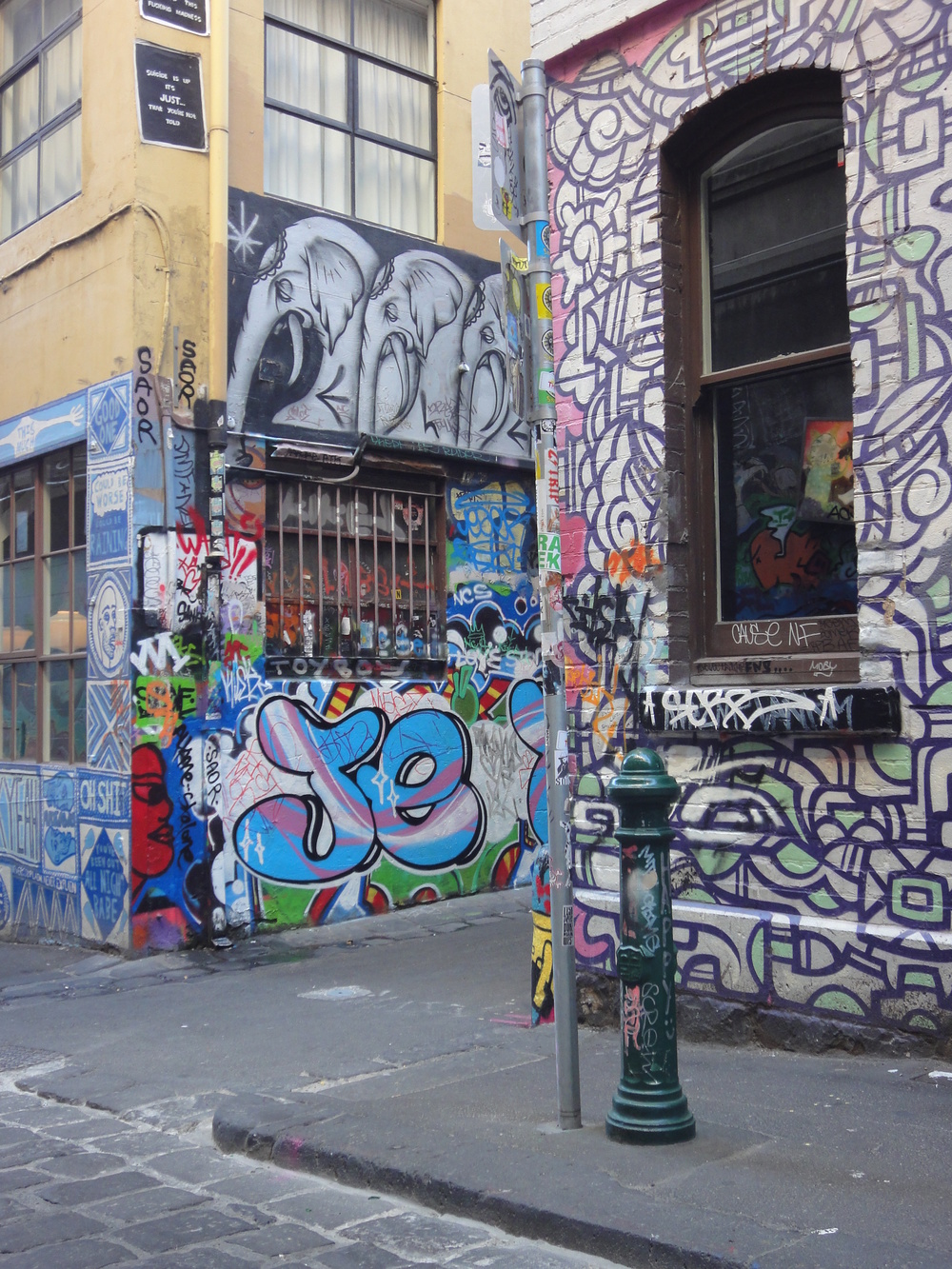
Street art in Melbourne has
met mixed debate over the years, fuelled by Lord Mayor John So’s zero-tolerance
policy on “graffiti” in the early Naughties. Subsequently, revered street art
in Melbourne suffered at the hands of a skin-deep approach as many overlooked
the art and the socio-political and cultural messages that prevailed within it;
they opted to focus on talentless tagging and graffiti. And this is where the line
between graffiti and street art needed to be drawn. John Fekner, an influential
street and multimedia artist from New York, once defined street art as “all
art on the street that’s not graffiti”. So, Hosier Lane emerged as a
location for artists who were keen to showcase their talents across its walls
in an act of education and self-preservation.
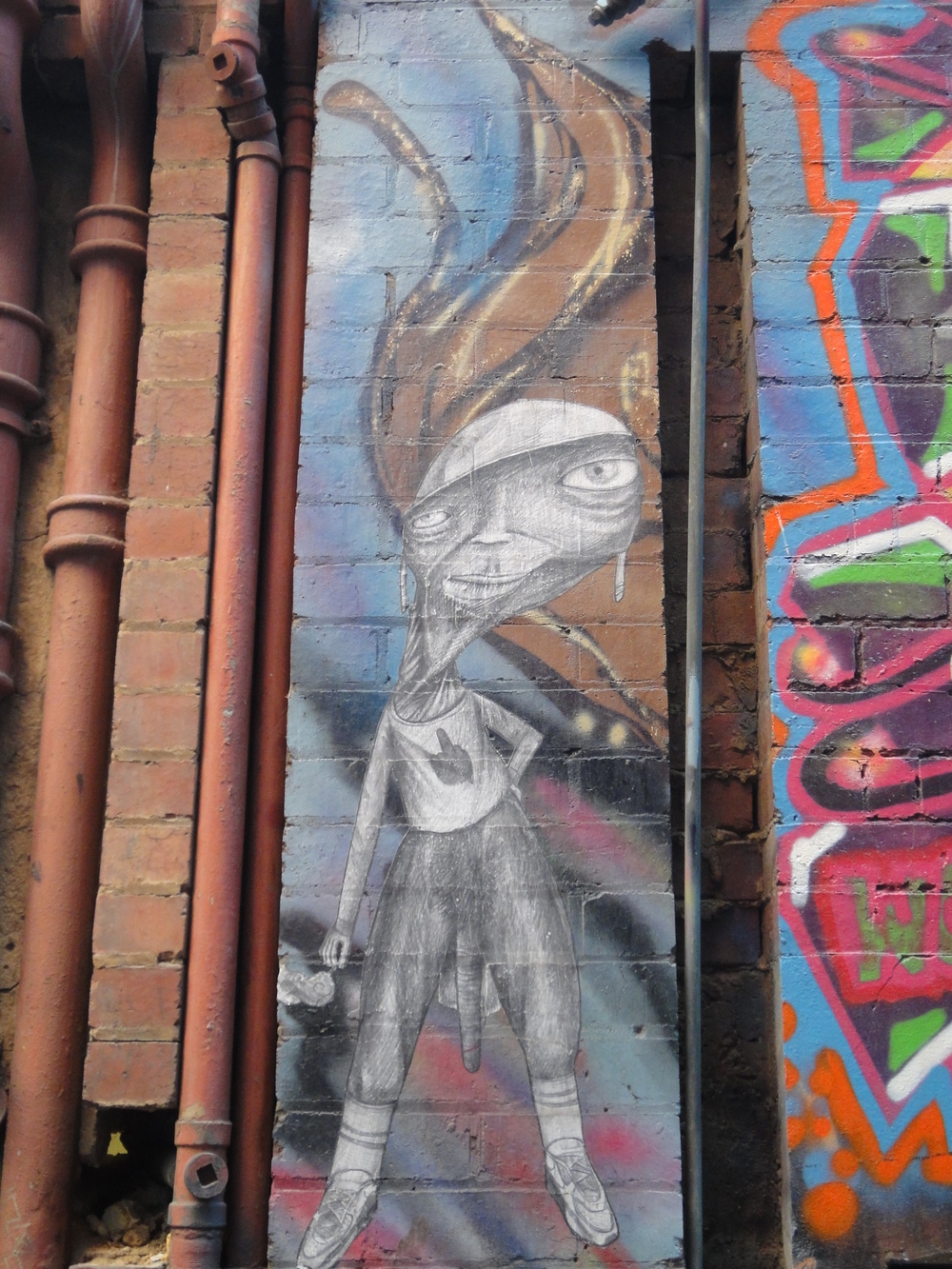
In recent years, Melbourne laneway
street art has come of age, standing defiant in the face of nay-sayers by
becoming one of the world’s prime destinations for street art and artists. Such
street art has flourished in Melbourne’s inner city suburbs as well.
Travellers visiting
Melbourne can be found wandering the cool, bluestone cobbles of Hosier Lane,
snapping the art with their phones – art that’s both on the wall and in feature
light-boxes as part of the Citylights project. Ironically, visitors slowly pace
alongside the ever-changing canvases of Hosier Lane, stopping at length to
absorb striking images and messages; behaviour traditionally reserved for the
clinical halls of the National Gallery of Victoria that’s located only a
kilometre away.

Cut-outs of women which have
been skilfully pasted up behind the bars of bricked-up window frames are
orbited by spray-painted Arabic calligraphy. Such collaboration transcends the spirit
of community and creativity in which these artists live by; two very different
artists, bringing together their individual art at two different moments in
time to create a unique and unexpected piece.
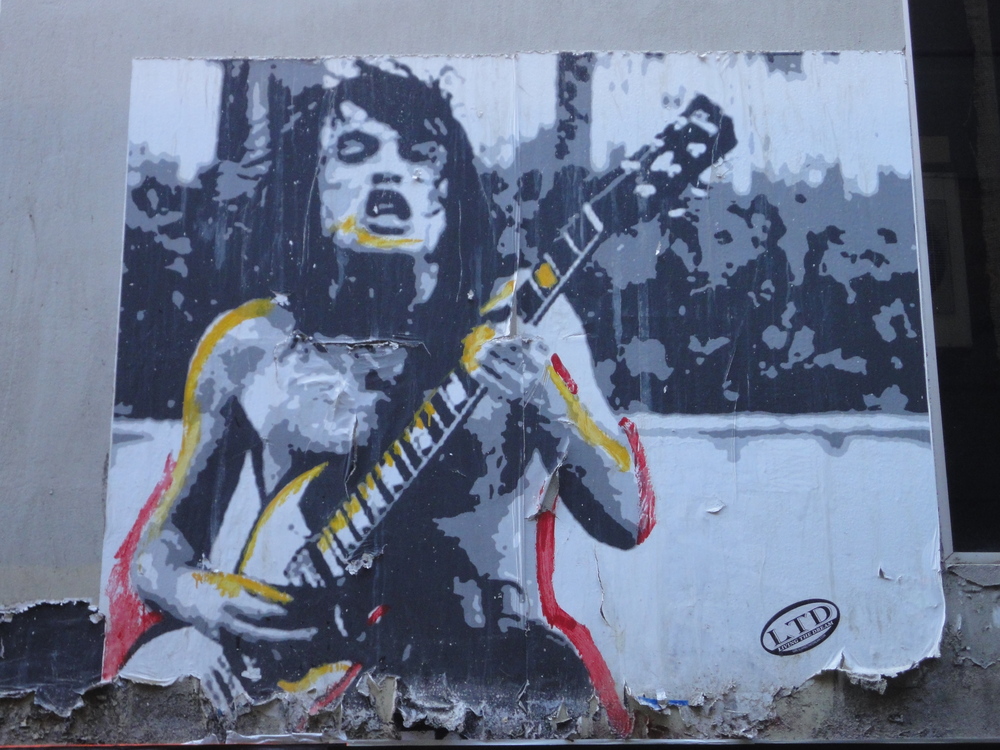
Other sites around the city
have surfaced since Hosier’s Lane’s shaky beginnings. AC/DC Lane, off Flinders
Lane, is where Melbourne’s rise in laneway street art has moshed to the
bellowing howls of Melbourne’s iconic live music scene. Corporation Lane was
renamed AC/DC Lane in 2004 to commemorate AC/DC’s career and the band’s
beginnings in Melbourne; another example where Melbourne’s sub-cultural “riff
raff” were sticking it to the suits. AC/DC Lane is also home to Cherry Bar, a heavyweight
on Melbourne’s live venue circuit that pays homage to rock. It’s also the venue
that said no to Lady Gaga’s request to host a tour after-party there, in favour
of keeping to its local booking schedule.
There are visuals to be found in
AC/DC Lane, such as pieces installed by AC/DC fans to immortalise Angus Young mid-riff, and the late Bon Scott. They watch
over musicians, laden with amps and guitar cases, who swagger through the lane
and disappear into the depths of Cherry Bar. A black and white poster of an
armed soldier wearing a gas mask guards AC/DC Lane from those who want to
threaten its underground existence. A fiery crow is emblazoned across a wall at
the end of the laneway, hidden by an ambiguous dead-end. Visitors who keep
tramping through here past the bins will find more paint and paste work in
adjoining Duckboard Place.
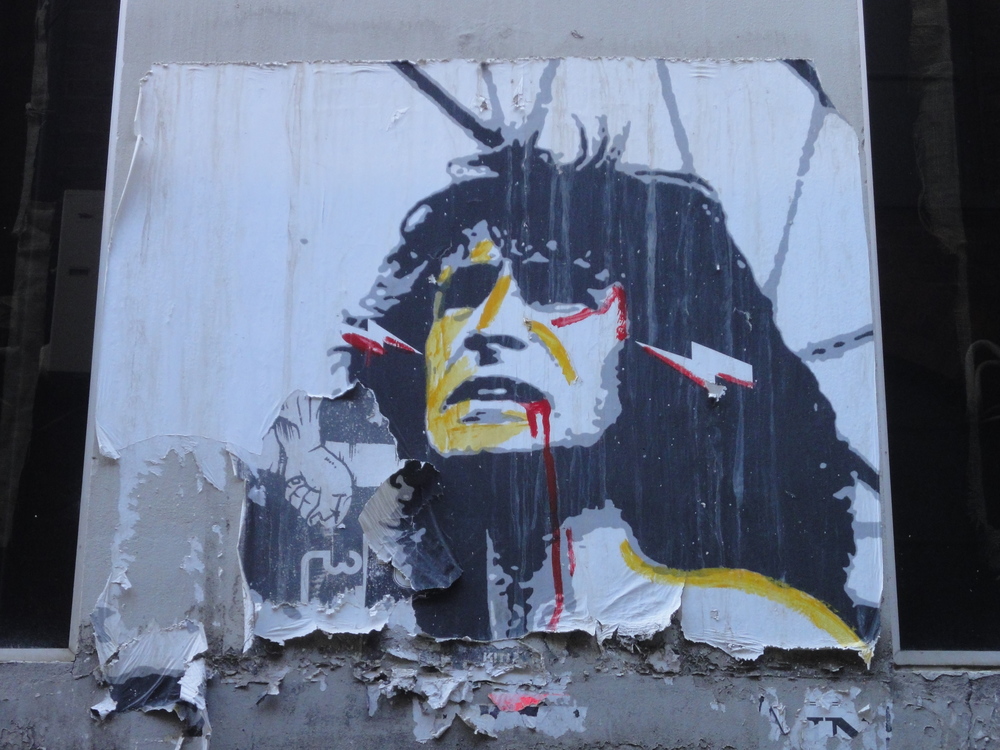
Union Lane, joining Bourke and
Little Collins Streets, penetrates Melbourne’s financial district with bold
statements and a rainbow of sprayed murals. Not only do the walls reveal the
evidence of late night art installations, the ground cradles empty spray cans
and an occasional slurpee cup, their contents ingested the night before.
Nearby, a cheeky blue face pops up from beneath the asphalt. As a helicopter
blade rotates on the top of his baseball cap, he taunts: “Haters hate painters paint!”
More Arabic calligraphy is found gracing the asphalt at the Bourke Street end,
a pink welcome mat for those who begin exploring Union Lane from here.
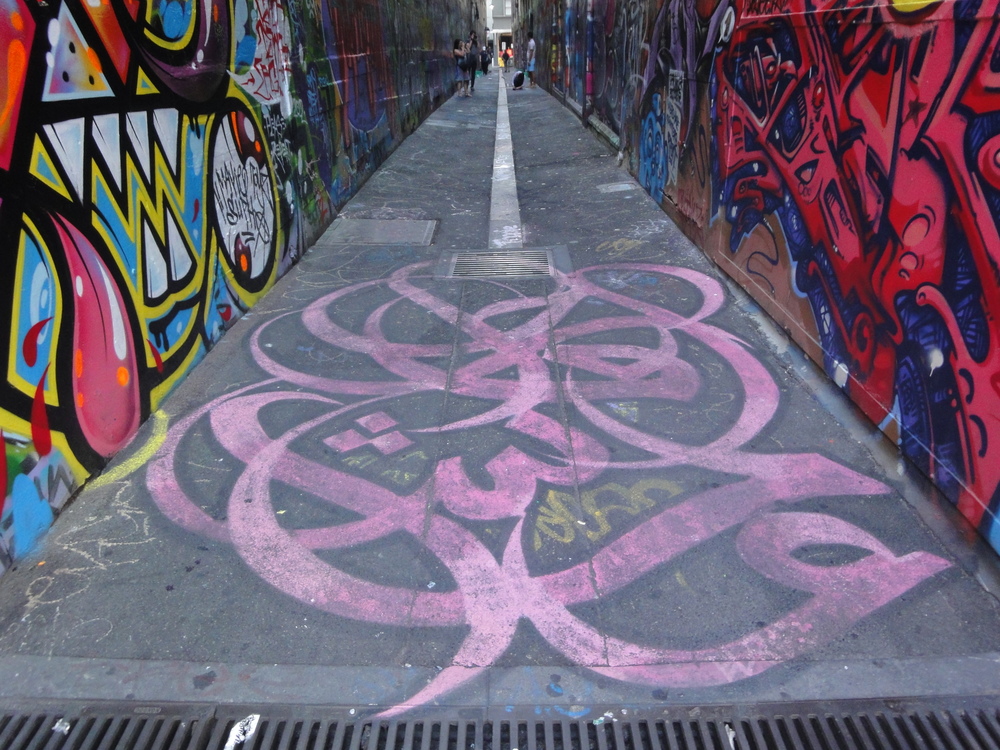
A faint smell of urine
lingers in the air, owning up to someone’s drunken antics from the early
morning clubbing hours. This only punctuates the fact that Melbourne laneway street
art hasn’t always been as clean cut as some might assume. A walk through
Melbourne’s street art laneways could bring you face to face with the work of world
famous artists, such as Banksy or ABOVE, but it brings visitors one step closer
to the grittiness, sweat and confrontation that is as part of Melbourne laneway
street art culture as it was in its frowned-upon beginnings.
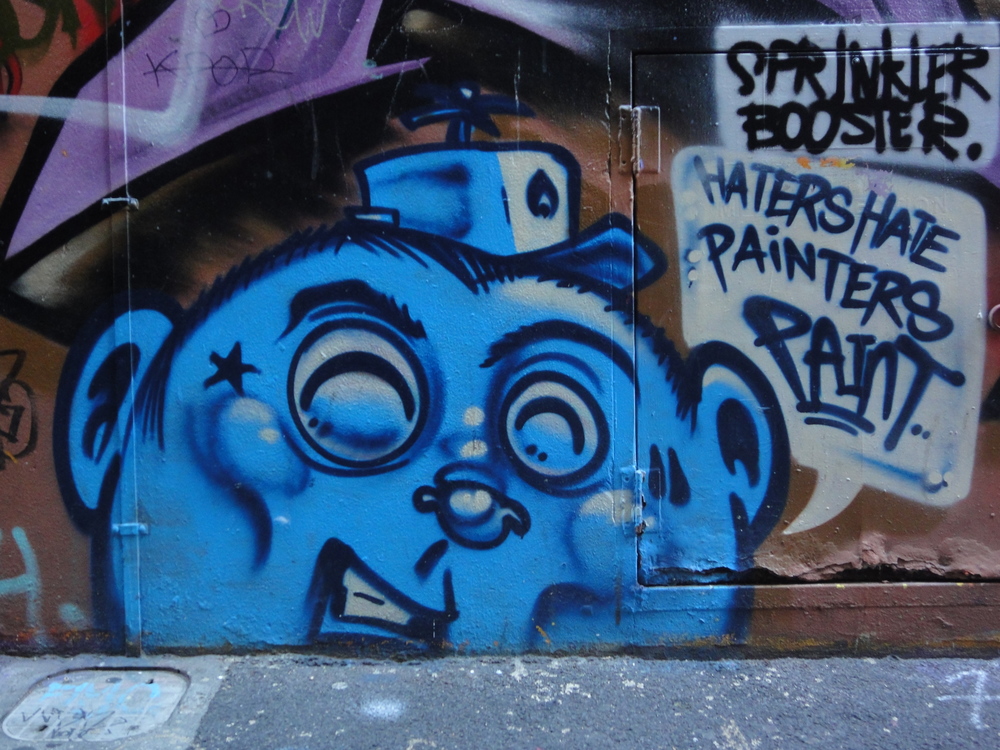
Take a tour of Melbourne’s
laneway street art with one of the city’s walking tour groups such as Melbourne
Street Art Tours,
Melbourne Walks or MELTours.

